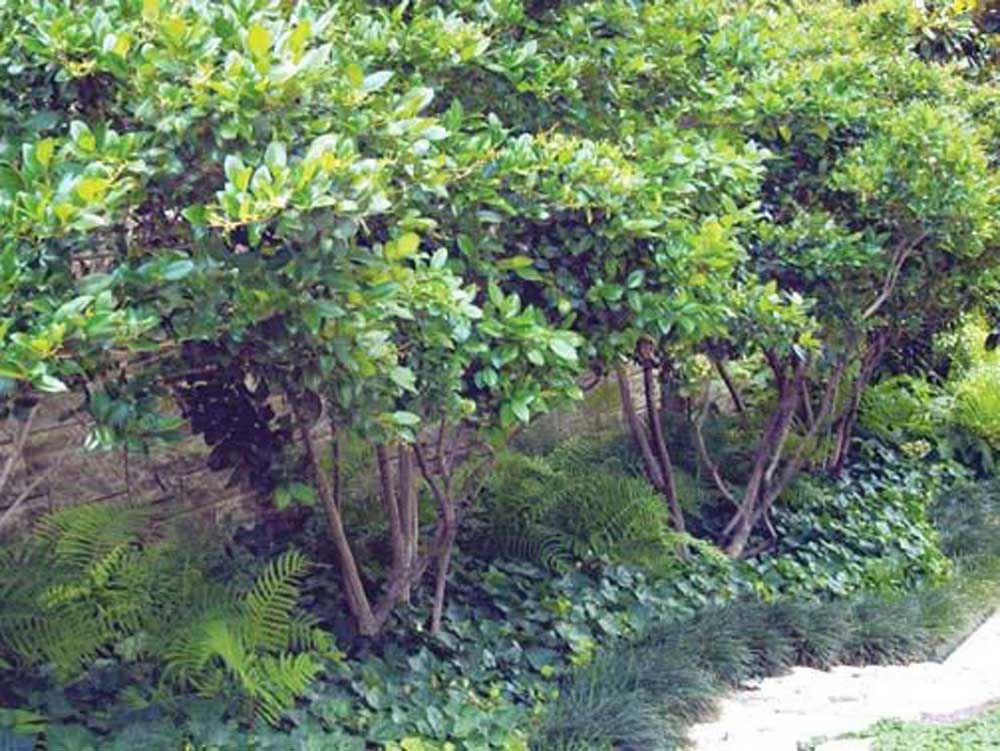This might be the year the Texas mountain laurels bloom
Published 3:45 am Thursday, March 1, 2018

- WAXLEAF LIGUSTRUMS are started only from cuttings. The seeds probably aren't even viable.
Dear Neil: We have two Texas mountain laurels that have been in the landscape for five years. They bloomed the first year, but they haven’t bloomed since. What can we do to get them to flower?
A: That’s almost like proving the negative. There are many things that could have kept them from flowering, including cold winter weather, excessive shade, too much rain, too much nitrogen in fall when they should have been starting to set flower buds, fall or winter pruning or any of many other possible reasons. The photos you attached look like perfectly healthy plants. It’s been my experience with them in my own landscape that some years are much better than others. Sit tight. Perhaps this year will be a barnburner. I hope so.
PERHAPS WRONG VARIETY
Dear Neil: Again this year, it looks like my daffodils are going to produce only leaves — no flowers. They only bloomed their first spring. What gives?
A: You almost assuredly chose a large-flowering variety such as King Alfred, Mount Hood, Unsurpassable, etc. Even some of the smaller daffodils find our Texas climate unsuitable to reblooming. Tulips and Dutch hyacinths do the same thing. All of these plants will produce foliage through the years, but they don’t flower again. They need to be treated as annuals. It’s less likely, but maybe possible that your daffodils are too crowded. If you bought a type that should have rebloomed for you, dig and divide the bulbs in late summer, and give them another chance. Remember to leave their foliage in place until it turns yellow, then brown each spring. The bulbs need the foliage to store nutrients for the following year. My bet is that you had the wrong variety for naturalizing in Texas. A few of your best choices of the larger types include Ice Follies, Carlton and Geranium.
LICHENS
Dear Neil: We have this growth on the bark of our live oaks and some of our crape myrtles. Should we treat it, and if so, with what?
A: These are lichens. They’re a symbiotic growth consisting of algae and certain species of funguses that nourish one another. They are epiphytes, meaning that they use the trees’ branches and trunks for support but not for nourishment. While they usually appear on weaker trees with thinning canopies, they do not cause the problems. In fact, your best recourse is not to apply fungicides to the trunks, but instead to apply nitrogen to the soil and to keep the plants watered thoroughly. That will encourage thicker canopies, which in turn will thicken up the top growth and cut off sunlight to the lichens. That should help the appearance of the trunks. But in the meantime, they’re pretty much a non-problem.
REPLACEMENT FOR OAKS
Dear Neil: I’ve lost numerous oaks due to Hypoxylon canker. What trees would be good replacements? I currently have a flowering pear, Chinese pistachio and a live oak that all seem to be doing well. I need one nice, large shade tree. What would you suggest?
A: Sorry to hear about the losses. Without seeing your landscape, it’s a little like an interior decorator suggesting a sofa without seeing the room. Perhaps some of the best options, depending on your soil and its depth, would be cedar elm or pecan. Southern magnolias (species, not one of the dwarf types) would be good, but considerably slower. Or, a second Chinese pistachio might be in order. Stay away from tree species that are not of the highest quality, and know ahead of time that the tree you select will be able to grow large enough to meet your needs.
CUTTINGS ONLY
Dear Neil: Can I plant berries from waxleaf ligustrum, or do I have to take cuttings to start new plants?
A: The plant most of us call “waxleaf ligustrum” grows to 8 to 10 feet tall without pruning, and we often maintain it at 4 to 6 feet with regular shearing. It is started only from cuttings. In fact, I’m pretty sure the seeds aren’t even viable. Sometimes, especially in other parts of the country, the plant we Texans know as Japanese ligustrum, or Japanese privet, is called “waxleaf.” It, too, has waxy leaf surfaces, but they’re not nearly as glossy as the first plant I mentioned. Japanese ligustrums also grow to 18 or 20 feet tall and 15 to 18 feet wide. They should never be sheared into low hedges. Every seed of Japanese ligustrum is viable, which is why it has become scorned — it’s invading wetland and even woodland areas of much of Texas.
Have a question you’d like Neil to consider? Mail it to him in care of this newspaper or e-mail him at mailbag@sperrygardens.com. Neil regrets that he cannot reply to questions individually.






